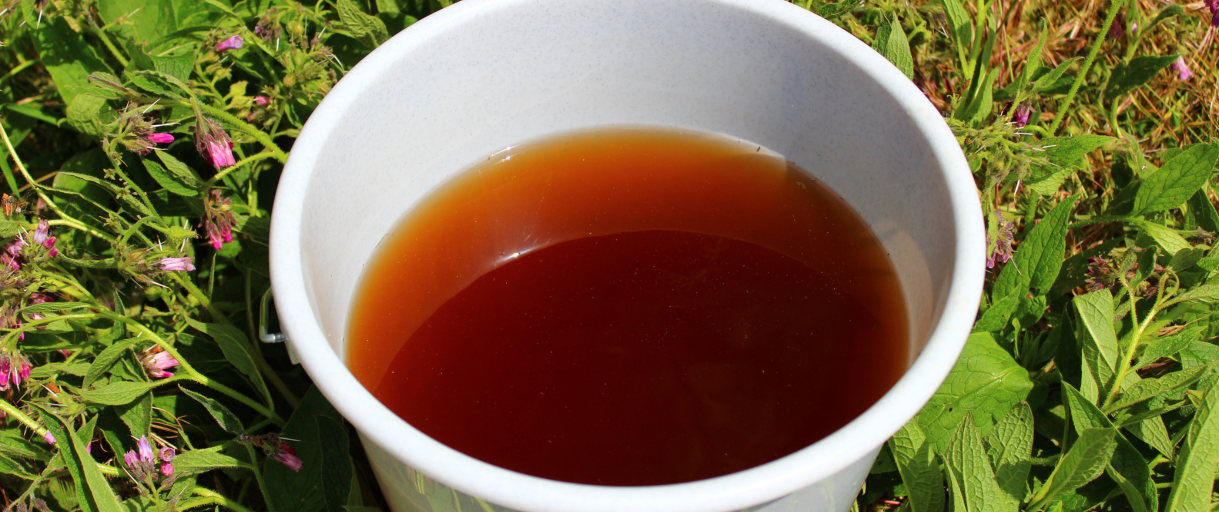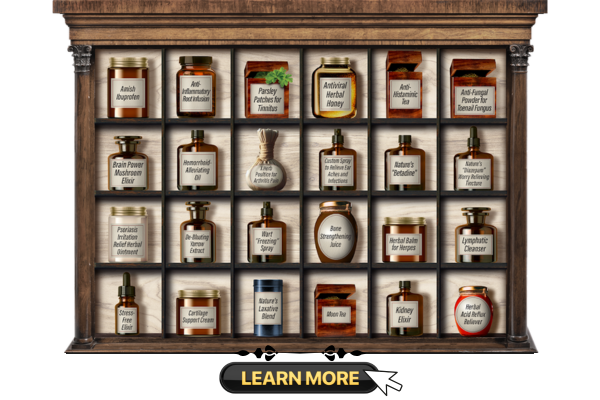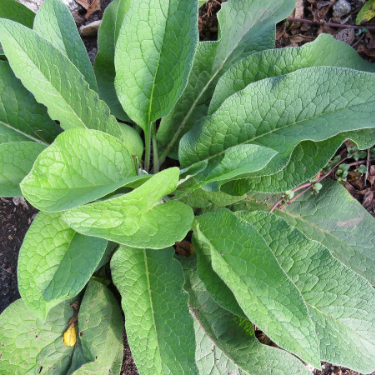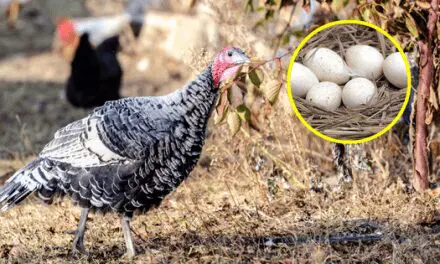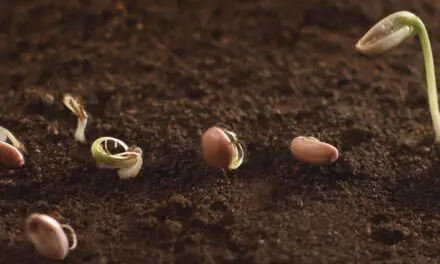Many people spend a small fortune chasing better soil, fewer pests, and healthier plants, without realizing that the fix for all of these costs nothing and might already be growing in their backyards.
You won’t find it on the shelf at the garden center. At first glance, you might even mistake it for a weed. But don’t be fooled. This powerhouse quietly improves soil, revives struggling plants, and even helps keep pests at bay. And it can even help in mending wounds (yours too, not just the garden’s)!
The strange part? It’s been used for centuries, but almost no one talks about it anymore. Odds are, you’ve already seen it…but just didn’t realize what it could actually do.
6 Reasons Why Comfrey Is a Powerhouse Plant
This bell-shaped flower often starts blooming from late spring through summer. While the plant does look appealing, many homesteaders and gardeners remove it just because they don’t know its value. If you also often wonder what to do with comfrey, then let me assure you: you don’t need to pluck it! In fact, you need to nourish it to witness the advantages it provides, such as:
1. Improves Soil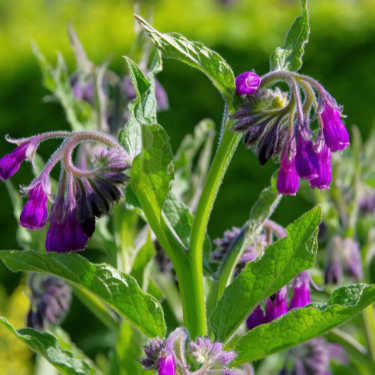
Comfrey has long been popular among gardeners and homesteaders for its ability to enhance soil health. This is due to its deep, hard roots that spread far into the topsoil to draw out nutrients like potassium, calcium, and phosphorus.
All these essential chemicals are stored in the leaves of the comfrey plant, so they can be later used for other purposes. How? By harvesting the leaves or by letting the leaves decompose on the topsoil itself, so other plants can absorb the nutrients.
Besides working as a natural accumulator, comfrey’s nutrient-rich leaves also structure the soil and activate microbial life in it. As a result, you grow your vegetables, fruits, and herbs in a healthy underground ecosystem.
2. Organic Manure
My fellow farmsteading brothers always told me how comfrey tea is the best all-organic fertilizer for plants. And I used to dodge their tales until and unless I saw the magic for myself. To prepare this chemical-free manure, you need to:
- Harvest and grind fresh comfrey leaves.
- Soak the chopped leaves in water for about a week or two.
- When the mix turns thick, dilute it with 10 parts of water and spray it onto the plants.
This manure may have an extremely pungent smell, but the results are just out of this world. Comfrey tea provides just the right amount of potassium, phosphorus, and nitrogen to provide a nutrient boost to the plants to thrive.
3. Attracts Pollinators
Remember how I discussed earlier that comfrey’s flowers are attractive? Yes, their beautiful colors and delicate blooms are a magnet for pollinators. Bees, including bumblebees, are often drawn to their tubular flower, which fits into their long tongues perfectly.
Moreover, hoverflies and butterflies are also the pollinators that may be attracted by comfrey. These insects may help in pollinating fruit trees, herbs, and most importantly, vegetables near comfrey patches.
So, if you’re growing crops that require pollinators, you need to plant comfrey in your homestead garden. Because the more pollinators you have in your lawn, the higher and better the yield of your harvest will be.
4. DIY Instant Remedy
You never know at a homestead when you might need a cure for a pulled muscle, sore joint, or gardening injuries. That’s where comfrey enters the picture. You can just mix up a homemade poultice or salve from fresh or dried leaves and just apply it straight on the sore area.
Some people even have comfrey leaf ice packs for a quick relief when out gardening in the summer or after some serious heavy lifting. It’s really not that hard to create a comfrey salve at home by infusing dried leaves in olive oil and then blending with beeswax.
You’ve got yourself a calming balm you can stick in your medicine cabinet and have on hand to use on bug bites, swelling, or bruising. Comfrey’s healing attributes are not confined to the skin. While you should not ingest it, its external applications qualify it as an actual first-aid herb.
🌿 The Forgotten Home Apothecary is your go-to resource for swapping out chemical-filled pharmaceuticals for natural, time-proven remedies you can make yourself at home.
Inside, you’ll find step-by-step instructions to craft your own tinctures, capsules, oils, teas, salves, elixirs, syrups, and poultices — all from plants that might be growing right outside your door or already sitting in your pantry.
These aren’t just trendy “Pinterest remedies” or old wives’ tales. These are trusted, battle-tested formulas used by herbalists, survival experts, and anyone serious about real, effective healing when modern medicine isn’t an option.
Inside the book, you’ll uncover recipes for remedies such as:
🧴 A soothing Calendula and Comfrey Skin Salve for cuts, burns, and irritated skin
⚫ A powerful Black Drawing Salve to draw out splinters and fight minor infections
🌿 A warming Three-Herb Poultice for Arthritis that eases joint pain and swelling
💧 An invigorating Herbal Oil for Joint Support to soothe tired muscles and stiff knees
🦠 A plant-based Nature’s Amoxicillin to help your body battle infections
🧬 A detoxifying Heavy Metal Flush to rid your system of mercury, aluminum, and lead
…and so many others. The top herbalist who wrote them has even opened her personal medicine video collection for you so you can check out how she prepares some of these remedies.
I left my personal discount link I found online for you. It’s got a 78% OFF discount and it comes with 3 FREE gifts.
5. Ready-to-Use Animal Feed Supplement
Comfrey isn’t just great for your garden—it’s also a mineral-dense forage crop for animals. Its leaves are full of high protein content, calcium, and other minerals, making it a great supplemental feed for poultry, rabbits, goats, and pigs.
Comfrey is frequently cut by many homesteaders and used fresh in feed, dried for winter stock, or even silaged. It’s especially useful when the pasture or grazing is poor. Just don’t overdo it—while comfrey is supremely useful in small amounts, too much is a problem due to the alkaloids.
Comfrey is just one example of how a so-called “weed” can turn out to be one of the most useful plants on your homestead. It feeds the soil, nourishes your animals, and even lends a hand in the medicine cabinet. But it’s not the only one.
That’s why I always say—don’t just grow food, grow medicine too.
Make sure you stock up on both food and medicinal seeds. This way, when everyone pays for antibiotics in gold, you’ll have them growing in your backyard. This crisis-proof seed pack contains one plant for every part of your body – you’ll find a painkiller, an anti-inflammatory, an anti-parasitic, and even some plants that can help people with diabetes and autoimmune disorders.
6. Extremely Easy to Maintain
After it’s established on the ground, comfrey doesn’t need a lot of upkeep. It doesn’t matter if you forget to water it sometimes, even during a dry spell, the plant will still grow fine. Furthermore, unlike most other garden produce, comfrey isn’t susceptible to pests or disease, so you won’t be wasting your time spraying pesticides.
➡️ Why the Amish Hardly Ever Have Pest Problems in Their Gardens
Another wonderful quality is how fast it regrows. Following its harvest by cutting it down for mulch, compost, or animal feed, you can expect new sprouts within a few weeks. You usually can harvest from it a number of times within a growing season. And, as an added bonus, it is a perennial that returns year after year without needing to be replanted.
How to Plant Comfrey
Comfrey is really easy to plant, even for a beginner. You can start with:
- Sowing plant root cuttings or crowns for the best reliable growth and faster establishment.
- Choose a spot with full sun to part shade and fertile soil that drains well.
- Make the holes 2–3 inches deep, place the cuttings on their sides, and cover with soil.
- Water thoroughly after planting to assist the roots in developing.
- Expect 2–4 weeks’ shoots, depending on conditions.
- Comfrey is a vigorous grower, so plant root barriers or in a bed.
- Once established, comfrey requires minimal care and tolerates drought well.
➡️ How You Can Build Self-Watering Raised Garden Beds
Final Words
To sum it up, comfrey might not be the coolest plant in your garden, but it’s certainly the hardest-working one. It rejuvenates the soil in your garden, feeds your animals, attracts the pollinators, and even provides some natural first-aid supplies. This amazing plant definitely deserves a spot, or at least a patch or two, in your garden.
So, rather than pulling it out or ignoring it as nothing more than another weed, give comfrey the special attention it deserves. In no time, you’ll see why so many gardeners refer to it as their “secret weapon.”
Have you ever grown comfrey in your garden, or used it for anything outside the soil?
Whether it’s a trick you learned from your grandparents or something you’ve recently tried, I’d love to hear how you use comfrey on your homestead.
Drop your tips, questions, or experiences in the comments below! 🌿
Happy gardening!
The Soap That Might Be Growing In Your Backyard
Learn How to Build an Indestructible Greenhouse the Amish Way (Video)

